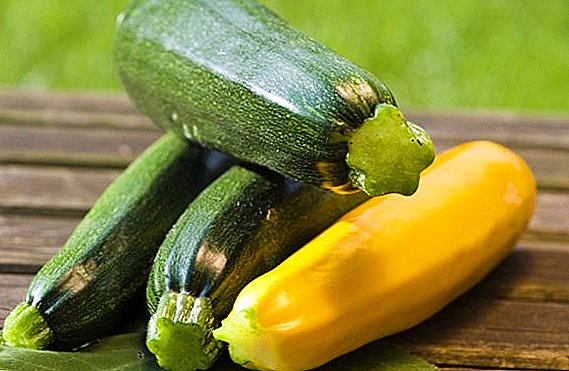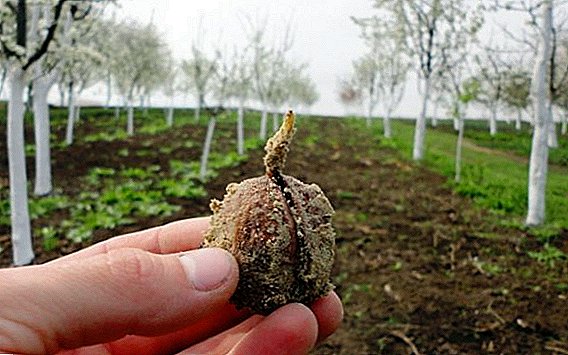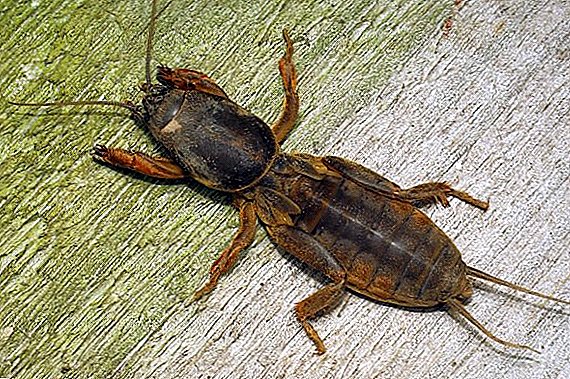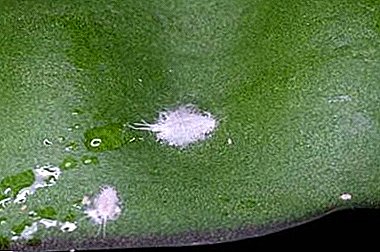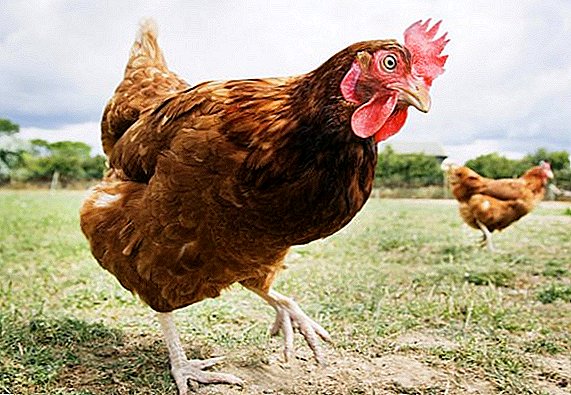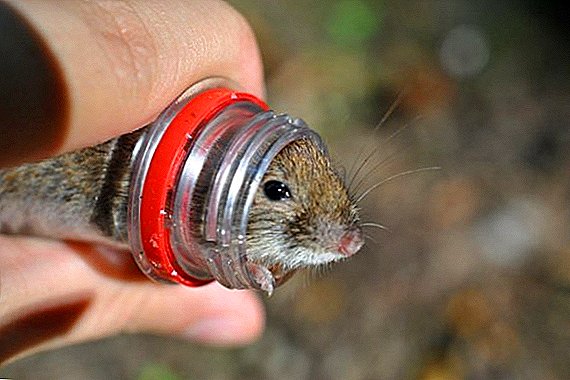 If small rodents are bred in a house, apartment or ancillary rooms, you need to get rid of them. Mice are able to cause great harm to food stocks, spoil valuables, become a source of unpleasant odors and infections. The article describes several ways of making mousetraps from the available materials with their own hands.
If small rodents are bred in a house, apartment or ancillary rooms, you need to get rid of them. Mice are able to cause great harm to food stocks, spoil valuables, become a source of unpleasant odors and infections. The article describes several ways of making mousetraps from the available materials with their own hands.
Option 1
Effective mousetrap from a plastic bottle and rubber bands for money. This model does not kill or injure a rodent. 
What we need
Materials:
- plastic bottle with a lid of 1.5-2 liters (preferably square in cross section);
- 2 strong thin sticks of 10-15 cm;
- paper clip;
- 2 gum for money;
- strong thread;
- bait that can be fixed.
- sharp stationery knife;
- screwdriver, piece of wire or awl;
- lighter or candle.
Important! The exact dimensions of the parts for each trap are selected empirically, since plastic flasks differtsya size and configuration.
How to make
The whole process of creating a trap takes place in the following order:
- We cut the capacity around the circumference, in the transverse direction, departing from the neck 1/3 of the height. At the same time, we leave uncut 1/4 of the circumference of the bottle or 1 of 4 walls (a construction similar to a box with a lid should turn out).
- The uncut vessel wall will become the upper part of the trap, opposite to it - the bottom.
- On the walls adjacent to the uncut, in the upper and lower parts of the tank, make a heated awl or wire with 2 holes opposite each other. We insert sticks into them, leaving 1.5-2 cm outside.

- We select the distance between the chopsticks so that the gum for money worn on them works as springs to close and hold the mousetrap cover. Put on the gum sticks on the right and left side.
- In the bottom of the bottle itself, we will weigh out 2 mm.
- Tie the end of the thread firmly to the bottle neck; it will continue to hold the trap in the cocked state. The neck should be closed with a lid.
- Opening the mousetrap, we note the length of the thread, sufficient to keep the lid lifted 90 degrees. We make in this place a non-allowed loop. Excess thread cut off.

- Fold back the long barb of the paper clip, put the bait in the central fold of the clip, fix it securely, bending back the loop from the short mustache.
- We cocked a mousetrap. To do this, open the trap. The clip with the prepared bait is placed inside the mousetrap, and the straightened long barb of the clip is brought out into the hole made in the bottom of the bottle. Put the loop on the tip of the clip. Adjust the mousetrap.
Option 2
Making a mousetrap in this way will require small joinery work. The trap will securely hold the rodent caught in a humane way.
Learn how to deal with snakes, voles, hares, deer, vipers, wasps, ants, bark beetle, weevil, shrew, mice and moles in the dacha.
What we need
Necessary materials:
- plastic bottle 0,5-07 liters - 1 pc .;
- bottle caps - 3 pcs .;
- Screws on wood 120-150 mm - 1 pc .;
- board thickness of 20-25 mm, width 50-70 mm;
- sushi or ice cream stick - 1 pc.
- saw;
- glue gun;
- screwdriver or screwdriver;
- ruler;
- pencil.
Did you know? The wire woven mousetrap is depicted on the coat of arms of the Nerot commune (Germany), whose inhabitants have made a living by producing and selling them for more than 150 years. Now in the commune is a museum of mousetraps.
How to make
The whole process of creating such a trap consists of the following steps:
- We cut 3 blanks from the board (one along the length of the bottle - this detail will become the base of the trap).
- For the other two parts, cut off from the board the bars 40-50 mm wide.

- In the middle of the vessel (without the lid) we make a through puncture with a tapping screw in the horizontal direction. It is important to perform it as accurately as possible.
- Screw the free sharp end of the screw into the center of one of the bars so that the bottle can rotate freely on it.

- We glue the bar, in a vertical position, with a self-tapping screw and a container, to the base, in the middle of one of its long sides. For better adhesion, we scratch the glued surfaces.
- The second bar must be shortened. To determine its height, lower the bottom of the bottle to the bottom of the trap. We put a bar to the neck (without the lid) and mark the level of the lower edge of the bottle neck on it. This will be the entrance to the trap.

- We shorten the wood to the required size and glue it vertically from the neck, leaving a gap of no more than 1-1.5 mm. In order to sink under the weight of the rodent, the neck does not touch the bar, but at the same time the partition securely closed the exit from the trap.

- Check the balance of the bottle. In the “cocked” position, the neck should be above the septum, and sink down under the weight of the rodent (for balancing, weighting can be glued from the lid to the bottom).
- Under the bottle, from the side of the neck we glue the support from the cap onto the base, it will hold the container in a horizontal position when the mousetrap is working.
- Due to this, the partition will securely close the exit from the trap.
- If the sharp end of the screw sticks out from the back of the bar, glue the cap on it from the cover.

- From the outside of the partition we glue the "ladder" of pieces of ice cream sticks. This will help even the smallest rodent to get inside the trap.
Did you know? Cheese is not a desirable treat for mice, they prefer food rich in carbohydrates.
Option 3
One of the simplest methods of making a mousetrap, since it does not require special skills and materials.
Read also how to deal with rodents at home and in the garden.
What we need
- Plastic bottle with a cap, 1.5-2 liters, with a slightly extended bottom.
- Stationery knife.
- Wire (length 15-17 cm).
- Lighter or candle
- Pliers.
How to make
- Cut off about 1/3 of the bottle from the bottom so that the upper part easily enters the bottom.
- In the wall of the lower part (center) with a stationery knife, cut a hole with a diameter of 2.5-3 cm. The hole should be completely closed by the top of the bottle, if you insert it into the bottom.
- On the wall of the lower part opposite to the entrance to the mousetrap, we make a thin hole, departing 2-3 cm from the upper cut.
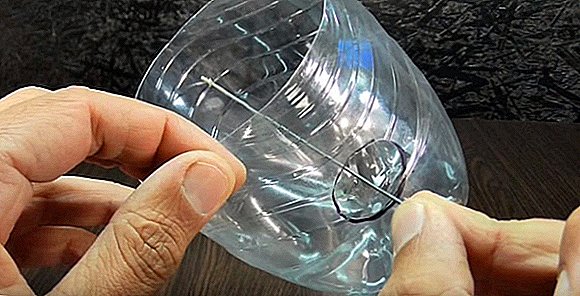
- To do this, heat the tip of the wire with a lighter to the melting temperature of the plastic, and melt a hole slightly larger than the diameter of the wire.
- Then bend the wire at a right angle. The length of one of the sides of the resulting letter "G" is equal to the height of the small hole.

- The other is 2-3 times shorter.
We collect a mousetrap:
- On the wire in the place of the fold we put the bait.
- We place the wire in the lower part of the trap, the short end of the output in a small hole 0.5 cm.

- Cover the mousetrap with the upper part.

- We adjust the withdrawn tip of the wire, leaving a minimum length sufficient to hold the upper part of the trap, until the mouse pulls the bait.
Important! It is not recommended to use a bottle without a cap; the mouse can tip over the trap and escape through the open neck.To accelerate the mousetrap, you can burn a wire in the upper part of the tank with 3-5 holes of 2-3 mm each.
Best lures
The type of bait depends on the design of the trap. Most often, use products that can be planted on a hook, but sometimes it is enough to pour bait into a mousetrap. The bait for a rodent can be any product from its diet:
- lard (fresh or salted);
- bread dipped in vegetable oil;
- biscuit;
- nuts, seeds;
- slice of porridge.
 The main thing is to find the presence of mice in the house, put food away to inaccessible places for them, do not leave behind dirty dishes and leftover food. Take out the trash daily. Hopefully, the described methods of making mousetraps from scrap materials will help get rid of uninvited neighbors.
The main thing is to find the presence of mice in the house, put food away to inaccessible places for them, do not leave behind dirty dishes and leftover food. Take out the trash daily. Hopefully, the described methods of making mousetraps from scrap materials will help get rid of uninvited neighbors.












